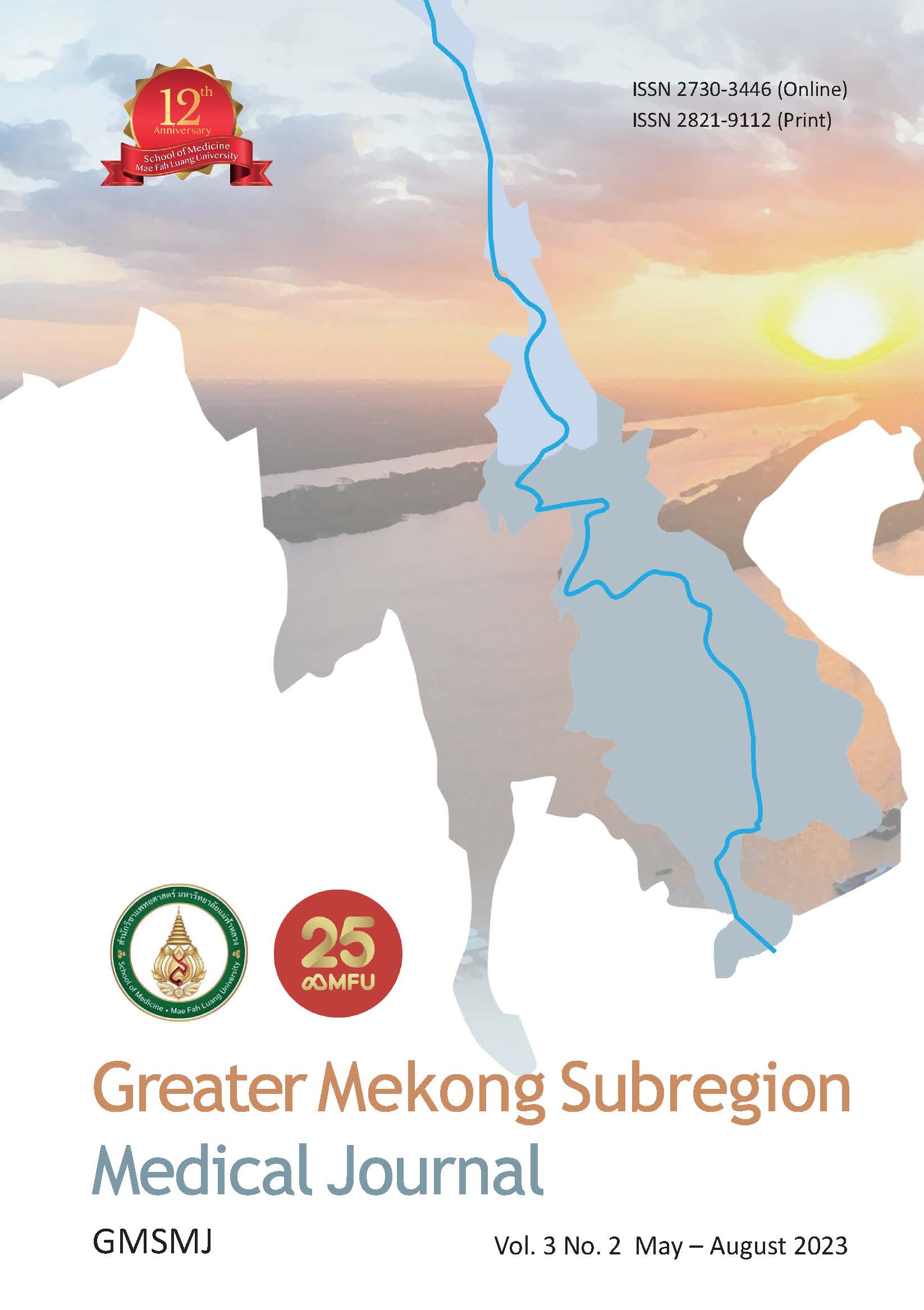Comparison of Characteristics and Outcome of The Patients with DRESS Who Received Culprit Drugs as Inpatient and Outpatient Basis
Abstract
Background: Drug reaction with eosinophilia and systemic symptoms (DRESS) is a severe cutaneous adverse reaction (SCAR), life-threatening with multiple internal organs involvement. The difference between inpatient and outpatient cases have not been reported.
Objective: To compare the characteristics and outcome of the patient with DRESS who received culprit drugs as inpatient and outpatient basis. Materials and
Method: This was a prospective study in a total of 64 patients visiting the division, who were diagnosed with DRESS according to the RegiSCAR criteria (score ≥ 4). We compared the results of demographic data, clinical presentation, laboratory, and mortality rate between inpatient and outpatient cases.
Results: Among the 64 patients, the inpatient cases were 47% and outpatient cases were 53%. The most common culprit drugs were antibiotic drugs in inpatient cases and anti-epileptic drugs in the outpatient cases. Time interval to detect DRESS of inpatient cases were shorter than that of outpatient cases (13 days versus 22 days); P-value = 0.001. Antibiotic drugs were significantly higher in inpatient cases (P-value = 0.005). Allopurinol, facial edema, lymphadenopathy, atypical lymphocytes and RegiSCAR score were significantly higher in outpatient cases (P-value = 0.005, 0.001, 0.021, 0.031, and 0.047 respectively). Mortality rate was not significantly different in both cases.
Conclusion: The difference between inpatient and outpatient cases were time interval to detect DRESS, facial edema, lymphadenopathy, atypical lymphocytes and RegiSCAR score. This data can be useful to manage the patients with DRESS.
References
Kardaun S h., Sekula P, Valeyrie-Allanore L, Liss Y, Chu C y., Creamer D, et al. Drug Reaction with Eosinophilia and Systemic Symptoms (DRESS): an original multisystem adverse drug reaction. Results from the prospective RegiSCAR study. Br J Dermatol. 2013; 169: 1071-80.
Walsh SA, Creamer D. Drug reaction with eosinophilia and systemic symptoms(DRESS): a clinical update and review of current thinking. Clin Exp Dermatol. 2011; 36 (1): 6-11.
Cho YT, Chu CY. Treatments for Severe Cutaneous Adverse Reactions. J Immunol Res. 2017; 2017:1503709.
Roujeau JC. Clinical heterogeneity of drug hypersensitivity. Toxicol 2005; 209: 123-9.
Chen YC, Cho YT, Chang CY, Chu CY. Drug reaction with eosinophilia and systemic symptoms: A drug-induced hypersensitivity syndrome with variable clinical features. Dermatologica Sinica. 2013 Sep; 196-204.
Avancini J, Maragno L, Santi CG, Criado PR. Drug reaction with eosinophilia and systemic symptoms/drug-induced hypersensitivity syndrome: clinical features of 27 patients. Clin Exp Dermatol. 2015; 40 (8): 851-9.
Corneli HM. DRESS Syndrome: Drug Reaction with Eosinophilia and Systemic Symptoms. Pediatric Emergency Care. 2017, 33 (7): 499-502.
Peyrière H, Dereure O, Breton H, Demoly P, Cociglio M, Blayac JP,et al. Network of the French Pharmacovigilance Centers. Variability in the clinical pattern of cutaneous side-effects of drugs with systemic symptoms: does a DRESS syndrome really exist. Br J Dermatol. 2006; 155 (2): 422-8.
Ang CC, Wang YS, Yoosuff EL, Tay YK. Retrospective analysis of drug-induced hypersensitivity syndrome: a study of 27 patients. J Am Acad Dermatol. 2010; 63: 219-27.
Shiohara T, Inaoka M, Kano Y. Drug-induced hypersensitivity syndrome (DIHS): a reaction induced by a complex interplay among herpesviruses and antiviral and antidrug immune responses. Allergol Int. 2006; 55 (1): 1-8.
Chen YC, Chiu HC, Chu CY. Drug reaction with eosinophilia and systemic symptoms: a retrospective study of 60 cases. Arch Dermatol. 2010; 146 (12): 1373-9.
Husain Z, Reddy BY, Schwartz RA. DRESS syndrome: Part I. Clinical perspectives. J Am Acad Dermatol. 2013; 68 (5): 693. e1-14.
Cacoub P, Musette P, Descamps V, Meyer O, Speirs C, Finzi L, et al. The DRESS syndrome: a literature review. Am J Med. 2011; 124 (7): 588-97.
Lee JY, Lee SY, Hahm JE, Ha JW, Kim CW, Kim SS. Clinical features of drug reaction with eosinophilia and systemic symptoms (DRESS) syndrome: a study of 25 patients in Korea. Int J Dermatol. 2017; 56 (9): 944-51.
Behera SK, Das S, Xavier AS, Selvarajan S. DRESS syndrome: a detailed insight. Hosp Pract. 2018; 46 (3): 152-62.
Walsh S, Diaz-Cano S, Higgins E, Morris-Jones R, Bashir S, Bernal W, et al. Drug reaction with eosinophilia and systemic symptoms: is cutaneous phenotype a prognostic marker for outcome? A review of clinicopathological features of 27 cases. Br J Dermatol. 2013; 168 (2): 391-401.
Ben m’rad M, Leclerc-Mercier S, Blanche P, Franck N, Rozenberg F, Fulla Y, et al. Drug-induced hypersensitivity syndrome: clinical and biologic disease patterns in 24 patients. Medicine (Baltimore). 2009; 88 (3):131-40.
Husain Z, Reddy BY, Schwartz RA. DRESS syndrome: Part II. Management and therapeutics. J Am Acad Dermatol. 2013; 68 (5):709. e1-9.
Cho YT, Chu CY. Treatments for Severe Cutaneous Adverse Reactions. J Immunol Res. 2017; 2017:1503709.
Criado PR, Criado RF, Avancini JM, Santi CG. Drug reaction with Eosinophilia and Systemic Symptoms (DRESS)/Drug-induced Hypersensitivity Syndrome (DIHS): a review of current concepts. An Bras Dermatol. 2012; 87 (3): 435-49.
Chen YC, Chang CY, Cho YT, Chiu HC, Chu CY. Long-term sequelae of drug reaction with eosinophilia and systemic symptoms: a retrospective cohort study from Taiwan. J Am Acad Dermatol. 2013; 68 (3): 459-65.
Kano Y, Tohyama M, Aihara M, Matsukura S, Watanabe H, Sueki H, et al. Sequelae in 145 patients with drug-induced hypersensitivity syndrome/drug reaction with eosinophilia and systemic symptoms: survey conducted by the Asian Research Committee on Severe Cutaneous Adverse Reactions (ASCAR). J Dermatol. 2015; 42 (3): 276-82.
Downloads
Published
How to Cite
Issue
Section
License

This work is licensed under a Creative Commons Attribution-NonCommercial-NoDerivatives 4.0 International License.






